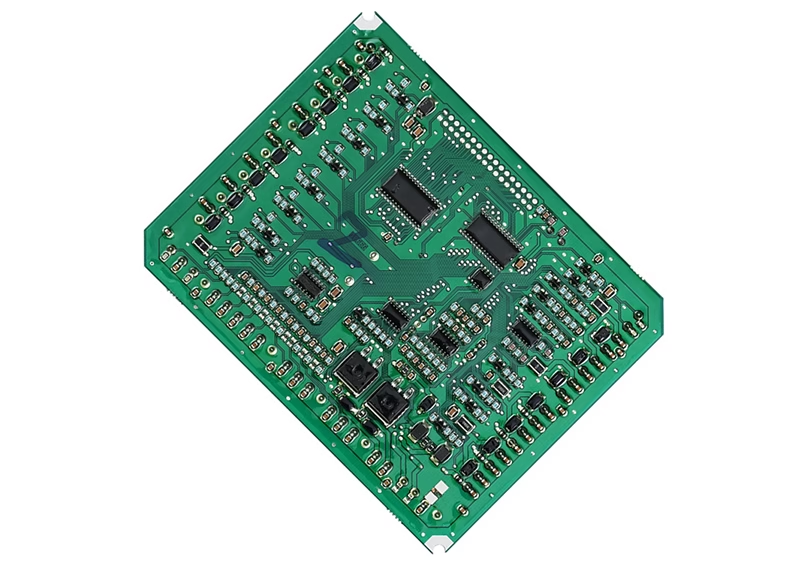What Are High-Speed PCB Materials?
High-speed PCB laminates like Isola FR408HR and Panasonic Megtron 6 are engineered to minimize signal loss and maintain impedance control in next-gen applications like 5G, high-density interconnect (HDI) modules, and terabit backplanes. These materials combine low dielectric loss (Df), stable permittivity (Dk), and advanced surface treatments to mitigate high-frequency attenuation, enabling data rates beyond 50 Gbps.
Key Parameters, Cost, and Applications
2.1 Technical Parameters
- Dissipation Factor (Df):
• Megtron 6 (HVLP): 0.002 @ 10 GHz
• FR408HR: 0.005 @ 10 GHz - Dielectric Constant (Dk):
• Megtron 6: 3.7 @ 1 GHz (stable up to 40 GHz)
• FR408HR: 3.74 @ 1 GHz - Surface Roughness:
• Megtron 6 HVLP: <1.2 µm (ultra-smooth for reduced conductor loss)
• FR408HR RTF: ~2.0 µm
2.2 Cost Efficiency
- Megtron 6: ~$350–$450/m² (HVLP variants cost 15% more than RTF)
- FR408HR: ~$200–$300/m² (ideal for budget-sensitive 25–40 Gbps designs)
Cost Tip: FR408HR reduces PCB fabrication complexity vs. Megtron 6, which requires tighter process controls for laser drilling.
2.3 Application Environments
- 5G Infrastructure: Antenna arrays requiring <0.1 dB/mm loss at 28 GHz.
- Data Centers: 112 Gbps PAM-4 SerDes channels.
- Automotive Radar: 77 GHz ADAS modules with impedance tolerance <±5%.

Advantages Over Competing Materials
3.1 Megtron 6 vs. FR-4
FR-4’s Df (~0.02) causes 6 dB higher loss in 12-inch traces at 25 GHz. Megtron 6’s HVLP surface reduces roughness-induced attenuation by 2 dB vs. RTF variants, critical for 50 Gbps+ links.
3.2 FR408HR vs. Nelco N4000-13EPSI
Nelco’s lower Dk (3.2) minimizes signal delay but sacrifices thermal resilience. FR408HR maintains Tg >200°C, outperforming Nelco in lead-free reflow environments.
3.3 Megtron 6 vs. Rogers RO4350B
Rogers laminates offer comparable Df (0.003) but cost 3x more. Megtron 6’s hybrid glass-weave design eliminates resonance issues at 60–80 GHz frequencies.
Common Challenges & Solutions
4.1 Impedance Mismatch in Multilayer Stacks
Dk variations between prepreg and core layers distort signals. Fix: Use Megtron 6’s MEGTRON 6 R-5775 bonding film for Dk consistency (±0.05).
4.2 Glass-Weave-Induced Skew
Standard glass styles cause ±10% phase variation. Mitigation: Opt for FR408HR’s flat-glass technology or Megtron 6’s spread-glass weaves to reduce skew to <1 ps/inch.
4.3 Moisture Absorption in High-Humidity Zones
FR408HR’s <0.2% water uptake vs. Nelco’s 0.35% ensures stable Dk in outdoor 5G deployments.

Why Choose High-Speed Materials for Your Project?
Q: “Which material is better for 50 Gbps backplanes: Megtron 6 or FR408HR?”
For >40 Gbps designs, Megtron 6 HVLP is king—its 0.002 Df cuts insertion loss by 4 dB over FR408HR in 12-inch traces. But if you’re budget-capped at 25–40 Gbps, FR408HR delivers 90% of the performance at half the cost.Q: “How to avoid delamination in high-Tg Megtron 6 boards?”
We pre-bake panels at 120°C for 4 hours and use low-stress lamination cycles—our process achieves 99.2% yield in 20-layer HDI builds.
Final Note
For 5G and HDI designs where every dB matters, Isola FR408HR and Megtron 6 set the gold standard. Questions? Reach us at sales@huaxingpcba.com—let’s push your signal integrity to the limit.




